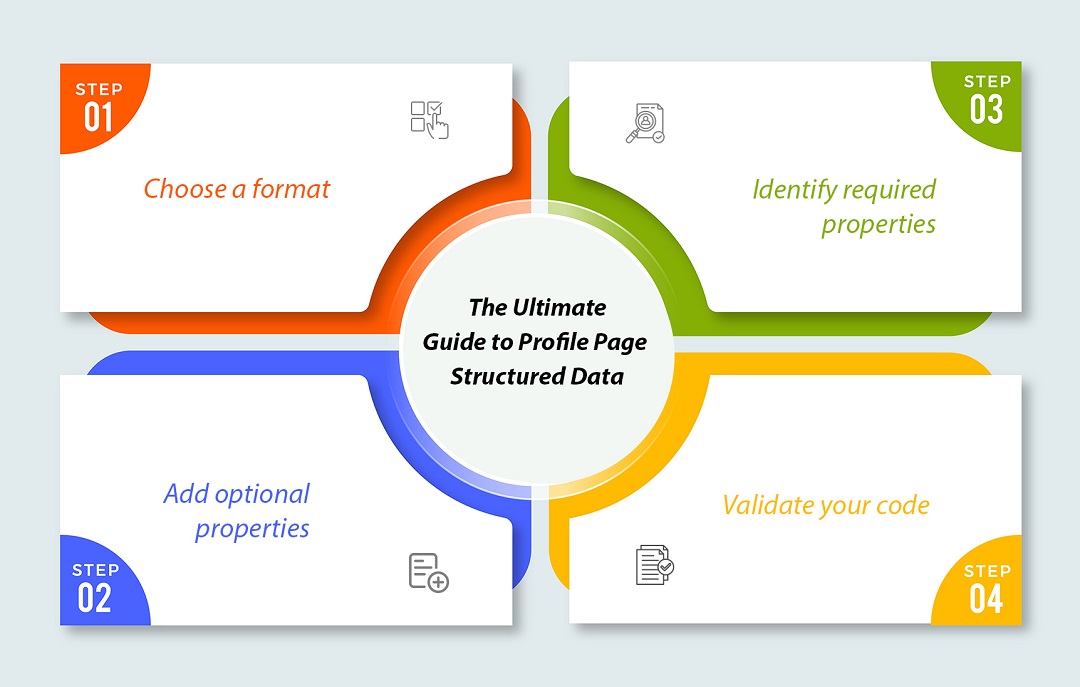The Ultimate Guide to Profile Page Structured Data

Table of Contents
- Introduction
- What Is Profile Page Schema Markup?
- Step-By-Step Guide to Create Profile Page Schema
- How To Add Profile Page Structured Data
- Sample Of A Profile Page With Markup
- Structured Data Type Definitions For Creators
- Guidelines
- Conclusion
Introduction
In today’s connected world, standing out online is essential! Whether you’re an individual or a business, a strong online presence is key. One crucial element of this presence is your profile page, which acts as your introduction to the world. But how can you ensure your profile shines and attracts the right audience? The answer lies in the powerful tool of Schema Markup, including Profile Page Schema, which unlocks an enhanced online presentation.
What is Profile Page Schema Markup?
Imagine your profile as a conversation. Structured data acts as the translator, providing search engines with a clear understanding of who you are, what you do, and why people should care. This information, coded using Schema.org vocabulary, helps search engines display your profile in richer and more engaging ways, including:
Enhanced search results: Your profile information, like name, occupation, and social media handles, appears prominently in search results, attracting more visitors.
Knowledge Panels: Google might display a dedicated Knowledge Panel showcasing your information, highlighting your expertise and achievements.
Improved navigation: Structured data helps search engines understand the relationships between different profiles on your site, making it easier for people to navigate and discover related content.
Step-by-Step Guide to Create Profile Page Schema:
Creating a Profile Page Schema is easier than you think. Here’s a step-by-step guide:
1. Choose a format: Choose between JSON-LD or Microdata formats. JSON-LD is recommended for its flexibility and ease of implementation.
2. Identify required properties: Define key information like name, job title, contact details, social media links, and profile image URL.
3. Add optional properties: Enhance your profile by including details like awards, publications, skills, and educational background.
4. Validate your code: Use Google’s Rich Results Test to ensure your structured data is error-free and eligible for rich results.
5. Implement the code: Add the structured data code to the head section of your HTML page, or use a plugin if your content management system supports it.
How to Add Profile Page Schema Markup:
Adding structured data varies depending on your platform. Here’s a quick overview:
Website builders: Many website builders offer built-in tools or plugins to add structured data easily.
HTML: If you’re comfortable with code, you can directly add the structured data markup to your HTML page.
Content management systems: Popular CMS platforms like WordPress offer plugins like Yoast SEO that simplify structured data implementation.
Sample of a Profile Page with Markup:
Here’s an example of a profile page with basic Profile Page schema markup (structured data) in JSON-LD format:
Structured Data Type Definitions for Creators:
Profile Page structured data expands beyond basic information. Here are some additional types you can utilize:
Article: For profiles showcasing authorial work.
Recipe: For profiles featuring culinary creations.
Organization: For business and organizational profiles.
Event: For profiles highlighting upcoming events.
Guidelines:
Follow Schema.org guidelines: Ensure your data adheres to the latest Schema.org vocabulary and specifications.
Use accurate and consistent information: Ensure the information you provide is accurate and consistent across all platforms.
Avoid spammy practices: Don’t use misleading or irrelevant information to manipulate search results.
Conclusion:
By implementing Profile Page Schema Markup, you unlock a powerful tool to amplify your online presence. Improved search visibility, enhanced user experience, and richer search results are just a few of the benefits you can reap. Start implementing structured data today and watch your online profile shine!
Note: This guide provides a basic overview. For more detailed information, refer to Google’s official documentation and Schema.org resources.
- Jan 02, 2024
